In January nearly 100 members of the Leelanau Conservancy Sustainers Circle gathered at the Glen Arbor Township Hall. The topic for our program was a brief retrospective of our first 25 years. We tried to show what our Founders envisioned, how we evolved and grew in our thinking since 1988, and how those changes in thinking have influenced the types of projects that we have done and will do in the next 25 years.
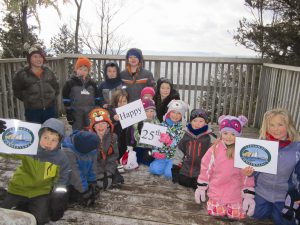 It is true that past is prelude. That means we will continue to protect wonderful natural land and some of the most scenic and productive farmland on the Leelanau Peninsula. But beyond that, what does the Conservancy’s leadership envision for the next 25 years? In what ways, however subtle, will our emphasis differ from the first 25 years? John Erb, in his Chairman’s column, talks of a group of kindergartners who hiked to the top of Whaleback. John asks, “What will Leelanau look and feel like when these children are ‘old’?” This is basically the same question that a number of our Sustainers asked following our winter gathering. How will the work we are doing right now matter to our current Sustainers, and also to our children’s children?
It is true that past is prelude. That means we will continue to protect wonderful natural land and some of the most scenic and productive farmland on the Leelanau Peninsula. But beyond that, what does the Conservancy’s leadership envision for the next 25 years? In what ways, however subtle, will our emphasis differ from the first 25 years? John Erb, in his Chairman’s column, talks of a group of kindergartners who hiked to the top of Whaleback. John asks, “What will Leelanau look and feel like when these children are ‘old’?” This is basically the same question that a number of our Sustainers asked following our winter gathering. How will the work we are doing right now matter to our current Sustainers, and also to our children’s children?
Abraham Lincoln reportedly used to say “The best way to predict the future is to create it yourself.” While our Founders, Ed and Bobbie Collins, never referenced Honest Abe directly, they clearly believed in the principle he espoused. This organization is all about creating a better future for the Leelanau Peninsula, and doing it by taking action to harness the talents of many people in a way that allows them to accomplish much more than any one well-meaning individual could ever accomplish alone. So let’s try to answer John’s question in the most forthright way that we can.
The Past Really is Prelude
In 1993, Ed Collins, in writing about our first five years, stated the reasons that he and his wife, Bobbie, founded the Conservancy. “Any person who has lived or vacationed in Leelanau County, no matter how short a time, becomes somewhat fused to this special place. All that seems required is brief contact with the gentle curve of the glacial landscape, the dramatic vistas over water and our small, distinctive villages. When we leave, we long to return.” Ed added that this longing and the desire to protect such beauty was the motivating principle behind the founding of the Conservancy.
The affirmation that the Leelanau Peninsula is a special place, and especially deserving of thought and care in its growth and development has been a theme that is echoed by virtually all of our publicly adopted planning documents, by our Leelanau Chamber of Commerce, and by those charged with mapping out a strategic plan for economic development.
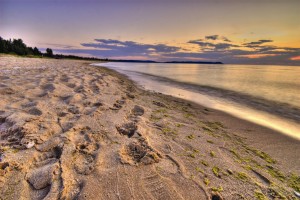 We don’t need public documents to tell us how much Leelanau means to each of us. To get a sense of what Leelanau means to people just take a look at the “Why Leelanau” blog on our website. Consider the fact that on an average day hundreds of people scattered across the globe wake up and check the Leland Report. They get a look at our weather and maybe a spectacular view of a familiar landmark. These are only two of the websites that keep people in touch with this place that they love to think about even when they are far away. Consider how many Leelanau devotees have a room or a wall set aside in their home in St. Louis or Phoenix or Tampa, with family photos taken in Leelanau, artwork depicting favorite places like Fishtown or the view from Empire Bluffs.
We don’t need public documents to tell us how much Leelanau means to each of us. To get a sense of what Leelanau means to people just take a look at the “Why Leelanau” blog on our website. Consider the fact that on an average day hundreds of people scattered across the globe wake up and check the Leland Report. They get a look at our weather and maybe a spectacular view of a familiar landmark. These are only two of the websites that keep people in touch with this place that they love to think about even when they are far away. Consider how many Leelanau devotees have a room or a wall set aside in their home in St. Louis or Phoenix or Tampa, with family photos taken in Leelanau, artwork depicting favorite places like Fishtown or the view from Empire Bluffs.
How much does it mean? Recently we asked Larry Webb, an Ohio insurance executive and strong Conservancy supporter, to speak to a group in Cincinnati. Larry said, “The house where I grew up in Lima, Ohio, has been sold. The first house I bought myself has been sold. But I don’t remember a time when our family didn’t come up to the cottage on Good Harbor Bay. It’s the place that we make family memories, and that we plan to always return to.”
Toward a Vision of the Future
The Founders’ vision of protecting beauty is as valid today as it was in 1988. Over the years the Conservancy has worked to make sure that our definition of beauty is expanded to include the overall health of the landscape, a concept first proposed by Aldo Leopold in essays written in the 1930s. Our Board of Directors was in large part inspired by Leopold’s rule: “The first principle of intelligent tinkering is to save all the pieces.” Leopold’s Rule guided us when we identified the lands that best represent the natural communities of the Leelanau Peninsula. Those essential “pieces” included large tracts of waterfront wetlands like Mebert Creek, the Cedar River, and the DeYoung Natural Area; coastal dunes including Houdek Dunes and Cathead Point; and signature coastal bluffs like Whaleback and Clay Cliffs. We protect these places because they are scenic and represent the essence of Leelanau to us, but also because we understand that these types of environments must be preserved in order to have a functioning landscape where wildlife populations, healthy forests, and clean waters abound.
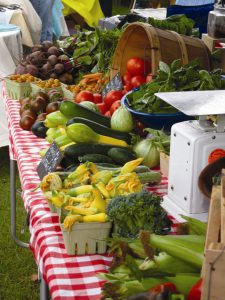 Increasingly as we enter our second 25 years a further motivation is at work. Research on successful communities throughout the nation has shown that in today’s world the competitive advantage has shifted to places that can attract the best talent. Quality of life – things like good schools, scenery, local foods and restaurants, and access to recreational amenities of all types – these are becoming the building blocks of any successful strategy to attract and retain employers. Key infrastructure used to be transportation networks which provided access to markets. Leelanau’s own Economic Development Corporation has increasingly stressed internet connectivity coupled with a clean and safe environment as the lynchpins in bringing jobs to the county. Instead of working to provide what we don’t have (such as rail connections or mass transit) the new model says we should focus on what we do have, and use that to drive growth.
Increasingly as we enter our second 25 years a further motivation is at work. Research on successful communities throughout the nation has shown that in today’s world the competitive advantage has shifted to places that can attract the best talent. Quality of life – things like good schools, scenery, local foods and restaurants, and access to recreational amenities of all types – these are becoming the building blocks of any successful strategy to attract and retain employers. Key infrastructure used to be transportation networks which provided access to markets. Leelanau’s own Economic Development Corporation has increasingly stressed internet connectivity coupled with a clean and safe environment as the lynchpins in bringing jobs to the county. Instead of working to provide what we don’t have (such as rail connections or mass transit) the new model says we should focus on what we do have, and use that to drive growth.
What Leelanau has in spades is something that so many communities in the country would die for. Chip Hoagland, long-time Chair of the Leelanau Economic Development Corporation, says, “Leelanau should be the breadbasket and playground of the Grand Traverse region, then we can build from there.” We have world-class scenery, a vibrant agricultural sector based on locally produced fruits and vegetables, and access to outdoor recreation in all four seasons. We have clean water, safe communities, and small local schools with great reputations. In short, we don’t need freeway interchanges to be successful.
 Long ago Leelanau’s Chamber of Commerce and many of its supporters realized that attracting tourists involves much more than marketing. Being successful entails making our villages more vibrant, preserving our scenery, protecting our lakes, and making these resources available for people to enjoy. In a world where a person dropped along the roadside in any given American city (whether tourist destination or not) would not know where she was because it all looks the same, Leelanau will be successful only if it protects the unique charm and distinctiveness of the community. The key is “authenticity,” that unique blend of history, culture and landscape that makes newcomers want to come back again and again.
Long ago Leelanau’s Chamber of Commerce and many of its supporters realized that attracting tourists involves much more than marketing. Being successful entails making our villages more vibrant, preserving our scenery, protecting our lakes, and making these resources available for people to enjoy. In a world where a person dropped along the roadside in any given American city (whether tourist destination or not) would not know where she was because it all looks the same, Leelanau will be successful only if it protects the unique charm and distinctiveness of the community. The key is “authenticity,” that unique blend of history, culture and landscape that makes newcomers want to come back again and again.
The Conservancy as both Protector and Economic Driver
The Founders knew from the beginning that a healthy environment and preserved landscapes don’t suppress economic growth, rather these qualities fuel a thriving economy. Our natural resources are the things that bring people here, and keep them coming back. Conserving our clean water, working farms and unique natural lands makes more sense than ever before.
As the Great Recession of 2008 slowly recedes, there is an explicit role for the Conservancy to play in building a vibrant local economy that keeps faith with our original vision. Increasingly we will now be asking ourselves: how can we help our local communities capitalize on their assets, and play a greater role in creating a vibrant economy within the context of a healthy environment?
By partnering with local communities we can achieve significant conservation and enhance the attractiveness of our towns as places to do business. Look for these types of projects to increasingly be a big part of our future.
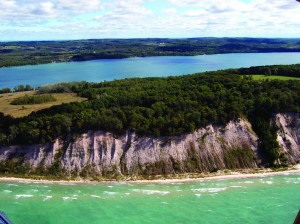 Protecting Natural Land: We have protected some of the most ecologically rich lands on the Leelanau Peninsula. There is much more to do, especially in making sure that we preserve the connections between protected natural areas, regardless of whether owned by the Conservancy or a unit of government. Connecting the dots will require the voluntary cooperation of private landowners and the expanded use of conservation easements.
Protecting Natural Land: We have protected some of the most ecologically rich lands on the Leelanau Peninsula. There is much more to do, especially in making sure that we preserve the connections between protected natural areas, regardless of whether owned by the Conservancy or a unit of government. Connecting the dots will require the voluntary cooperation of private landowners and the expanded use of conservation easements.
Farmland Protection: Farming and food processing along with the interest in local foods and value-added products is a bright spot of our local economy. We have unique microclimates to grow high-value crops, and we increasingly have young entrepreneurs that want to turn the fruits of our soil into products that can compete with any in the world. The Conservancy’s unique role is to provide expertise and access to capital that can permanently preserve family farms.
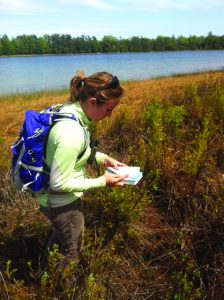 Restoring Land Health: Increasingly, we will be devoting resources to restoring land to a healthier condition. We should not resist spending time and money on this effort, because the 2,000 acres currently owned or managed by the Conservancy represents some of the finest examples of our native heritage, and we should embrace the opportunity to improve the resilience and health of these lands. By doing so, we lead by example, and can influence management decisions on many thousands of acres of privately-held lands. The rise of invasive species like garlic mustard in our woods or Phragmites on our shorelines, are challenges that the Conservancy faces, as do scores of private landowners. We will struggle with forest diseases that destroy ash trees and beech trees and challenge our ability to continue the healing of lands that were decimated by wholesale clear-cutting more than 100 years ago. But in restoring native landscapes we honor Aldo Leopold’s vision of the expanded and “healthy biotic community” and his definition of “conservation as a state of harmony between men and land.”
Restoring Land Health: Increasingly, we will be devoting resources to restoring land to a healthier condition. We should not resist spending time and money on this effort, because the 2,000 acres currently owned or managed by the Conservancy represents some of the finest examples of our native heritage, and we should embrace the opportunity to improve the resilience and health of these lands. By doing so, we lead by example, and can influence management decisions on many thousands of acres of privately-held lands. The rise of invasive species like garlic mustard in our woods or Phragmites on our shorelines, are challenges that the Conservancy faces, as do scores of private landowners. We will struggle with forest diseases that destroy ash trees and beech trees and challenge our ability to continue the healing of lands that were decimated by wholesale clear-cutting more than 100 years ago. But in restoring native landscapes we honor Aldo Leopold’s vision of the expanded and “healthy biotic community” and his definition of “conservation as a state of harmony between men and land.”
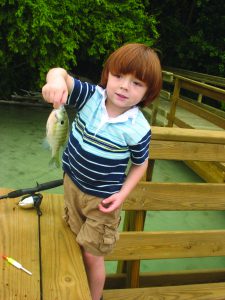 Access to Recreation: Working with local communities, we can assist in the expansion of parks and trails. This is valuable because it helps to create the livable, walkable communities that are increasingly the places that young (and older) professionals are drawn to live and work. We can’t do most of this work alone, but only by working in concert with units of government.
Access to Recreation: Working with local communities, we can assist in the expansion of parks and trails. This is valuable because it helps to create the livable, walkable communities that are increasingly the places that young (and older) professionals are drawn to live and work. We can’t do most of this work alone, but only by working in concert with units of government.
Projects that preserve community character: The Conservancy helped Leland Township when it sought to expand public access to Van’s beach while at the same time preserving the south flank of Fishtown at Hall Beach. We protected the Gateway to Empire, and over 3,000 feet of the Crystal River as it runs parallel to M-22 at Glen Arbor. These types of projects help to define the edges of our compact coastal villages.
Partnerships of all types: We will increasingly pursue projects with existing community groups. School groups will use our lands for study and field trips. Experimentation with new types of agriculture will be part of the mix at the DeYoung farmstead. We will work with hunting and fishing interests to enhance access to recreation land. And Saving Birds Thru Habitat is already a strong non-profit partner in restoring and enhancing wildlife habitat in our Natural Areas and Preserves. Watch for a new mobile device APP that we are collaborating with other non-profits to produce. The APP will guide visitors to recreational areas all over the region.
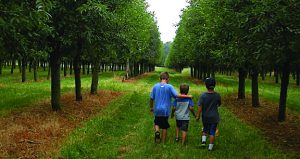 The Leelanau Conservancy was birthed as a response to what in the 1980s we thought would be inevitable growth. As was stated by guest columnist Ed McMahon in our 1994 summer newsletter: “Growth is inevitable. The ugliness and destruction of community character that so often accompanies growth is not. Community can grow without destroying the things people love. Beauty, heritage, and environmental quality are good for business.”
The Leelanau Conservancy was birthed as a response to what in the 1980s we thought would be inevitable growth. As was stated by guest columnist Ed McMahon in our 1994 summer newsletter: “Growth is inevitable. The ugliness and destruction of community character that so often accompanies growth is not. Community can grow without destroying the things people love. Beauty, heritage, and environmental quality are good for business.”
Our challenge for the next 25 years is to demonstrate that preserving the things we love can actually fuel growth and stabilize a sound and diversifying economy, while continuing to make strides in building the state of harmony between humans and land that Leopold envisioned some 80 years ago. It will be a challenge to build a community that preserves its uniqueness and authenticity while growing. We will do all this by harnessing the talents of the many people who care about our special peninsula. We will, as Abe Lincoln would have suggested, predict the future by creating it ourselves. ~ Brian Price



